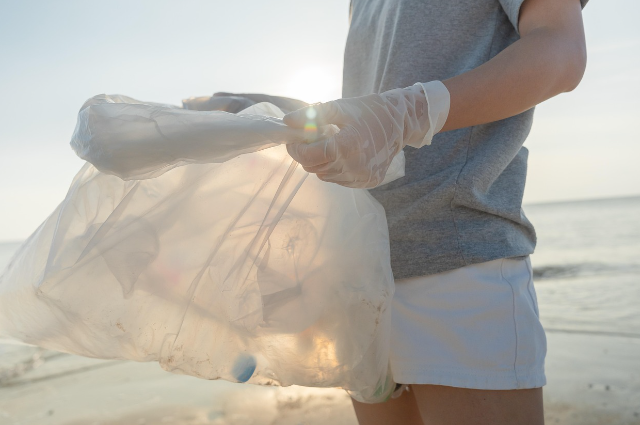
Plastic, one of the greatest inventions of contemporary science, has now turned into a worldwide environmental issue. Plastic is employed in nearly every facet of our existence — from food packaging and shopping bags to furniture, medical equipment, electronics, and clothing. Its strength, flexibility, light weight, and low manufacturing price make plastic a desirable material for consumers as well as manufacturers. But what was originally a blessing has gradually become a menace with its constant overuse and improper dumping.
The primary issue with plastic is that it is non-biodegradable. Unlike natural matter, plastic cannot be decomposed biologically by microbes. It may take centuries to millennia to degrade, and even that doesn't make it vanish. Rather, it disintegrates into small pieces known as microplastics, which contaminate the environment further. Millions of tons of plastic are manufactured every year all over the world, and much of it is turned into trash. Plastic trash is usually burned freely or sent to landfills, rivers, and oceans in most locations. This irresponsible disposal generates immense harm to the environment and adds to air, land, and water pollution.
Plastic pollution impacts all areas of the ecosystem. It blocks drains, leads to urban flooding, and contaminates soil, making it less fertile. Chemicals from decomposing plastic waste find their way into the soil and water sources, impacting both human and animal life.
Plastic trash floats for years in oceans and rivers. Recent research shows that approximately 8 million tons of plastic go into the oceans every year. Some marine creatures, including turtles, whales, dolphins, and fish, tend to confuse plastic with food. Swallowing plastic causes choking, blockage of the intestines, and eventually death. Coral reefs, which are crucial for marine life diversity, are also being annihilated by plastic waste. When it comes to land, stray cows and dogs tend to graze on garbage containing plastic bags and wrappers. It creates internal damage, poisoning, and death. Even birds contain plastic fragments in their stomachs, strongly affecting their health and survival.
Plastic pollution is not only an ecological problem; it is a severe health issue too. Microplastics have now become part of the human food chain via seafood, drinking water, and even salt. These microscopic particles, which cannot be seen by the naked eye, are consumed by sea animals and ultimately by humans.
Moreover, most of the plastic products have toxic chemicals like BPA (Bisphenol A), phthalates, and lead that can disrupt the human endocrine system. These toxic chemicals have been associated with medical ailments such as hormonal imbalance, infertility, child developmental issues, obesity, and even some forms of cancer.
Individuals residing around plastic industries or dumping sites are also affected by air and water contamination due to poisonous plastic waste. Plastic incineration produces toxic gases such as dioxins and furans, which cause respiratory issues, skin ailments, and long-term medical complications. Single-use plastic, used once and discarded, is one of the single biggest sources of plastic pollution. Plastic bags, straws, bottles, cups, and food packaging fall into this category. They are easily disposed of and account for much visible plastic pollution.
Despite being used for a very short period — sometimes just a few minutes — single-use plastic takes hundreds of years to decompose. Countries around the world are now waking up to this problem and have started banning or restricting such items. However, the implementation is still weak, and consumer behaviour remains unchanged in many regions.
Although the situation looks bleak, there is hope. Plastic pollution can be curbed through an effort by individuals, the community, the government, and industries together. Listed here are a few solutions that would help combat the plastic menace:
Reduce, Reuse, Recycle: The old school mantra is as relevant today. Plastic use needs to be cut down first. Refrain from excessive usage of plastic things, use cloth or jute bags, keep refillable bottles, and stay away from items with bulky plastic packaging. Appropriate Waste Management: Creating effective plastic waste collection, segregation, and recycling systems is imperative. Governments need to invest in waste infrastructure that facilitates sustainable waste disposal.
Plastic Alternatives promotes the consumption of biodegradable or environmentally friendly alternatives like paper, glass, metal, bamboo, or plant-based packages. Startups and industries are already creating plastic-free products.
Legislation: Governments must enact strict legislation to prohibit or reduce the use and production of single-use plastics. A strict implementation of the law with penalties for non-compliance is vital to ensure compliance.
Corporate Responsibility: Businesses ought to own up to the plastic they consume. Numerous brands are currently transitioning to eco-friendly packaging and encouraging recycling schemes. More industries must join them.
Thus, Plastic, once a revolutionary invention, has now become one of the biggest environmental threats of our time. Its overuse, poor disposal, and non-biodegradable nature have turned it into a danger to all living beings. From polluting oceans and land to entering our food chain, plastic’s impact is far-reaching and alarming.
But we do have the ability to alter the trajectory of this crisis. By embracing sustainable habits, buying eco-friendly products, and living less off plastic, we can save the planet for ourselves and for our children. It isn't too late — but we have to act immediately. The decision is ours: convenience now or a healthy planet later.
